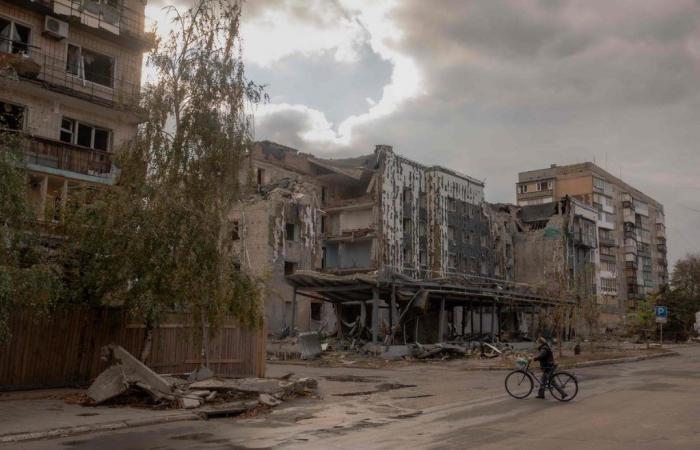This capture, the consequences of which remain difficult to predict, illustrates the precarious situation in which the Ukrainian army finds itself, smaller in number and less well equipped. Ukraine’s daring gamble of attacking the Russian region of Kursk in August to force Russia to divert its troops from eastern Ukraine has so far not paid off. For many villages in the area, the Russian advance in Vougledar means that the intensity of strikes is likely to increase and that the danger of occupation is approaching. But for Lilia Prouss, it’s impossible to pack her bags once again. “I don’t have the strength to run away,” says this 46-year-old woman with short-cut blond hair. The couple will therefore move into the outbuilding of their house, which is a little less damaged.
Kurakhové in danger
The conquest of Vougledar, alone, “will not radically change” the situation in the area, assured the Institute for the Study of War (ISW), an American think tank, in early October. But taking this lock, high up and near several important roads, gives the Russians a tactical advantage. About fifty kilometers further north, they are only about eight kilometers from Pokrovsk, a key logistical node for the Ukrainian army. The Russians hope, by seizing it, to also increase pressure on the southern front, towards Zaporizhia, where strikes are already increasing.
“If we take this city […]”, we will clear the entire southern axis of (the region of) Donetsk and put pressure on the enemy grouping of Zaporizhia,” a representative of the Russian occupation in Donetsk told the Russian news agency Ria Novosti on Tuesday, Igor Kimakovsky. The industrial city of Kourakhové, in the same region, seems close to falling. Russian troops are at its gates, a handful of kilometers from the center. “We are going to contain them a little longer,” judges Yaroslav, senior sergeant in a company of the 110th brigade, which operates in the vicinity of Kourakhové.
But it depends on the supply of equipment and ammunition, he said. A soldier from the 33rd brigade, Arkhip, makes the same observation, disappointed at having to work with vehicles that do not always work. “The war will be won by the side with the best logistics,” thinks this 40-year-old soldier. Another problem: the lack of new recruits. Those who have been at the front for two and a half years are often exhausted and traumatized, there is a shortage of new volunteers, while mobilization, despite a new law expanding it, remains sluggish. Arkhip explains that he suffered from “panic attacks” because of the bombings and landmines. From his original unit, he says he is the last one still at the front. “They send people but it’s still not enough.”
Guided aerial bombs
In the emptied streets of Kourakhové, buildings with blown out windows follow piles of ruins. Lyubov Solod and her husband Ivan, both 65 years old, chose to leave. For him, a final goodbye to his home is too hard to accept. Maybe it will be possible to come back one day, “who knows?” Hope dies last.” Part of the Solod family took refuge in Odessa, in southwest Ukraine. But this large port city is also being targeted with increasing regularity.






